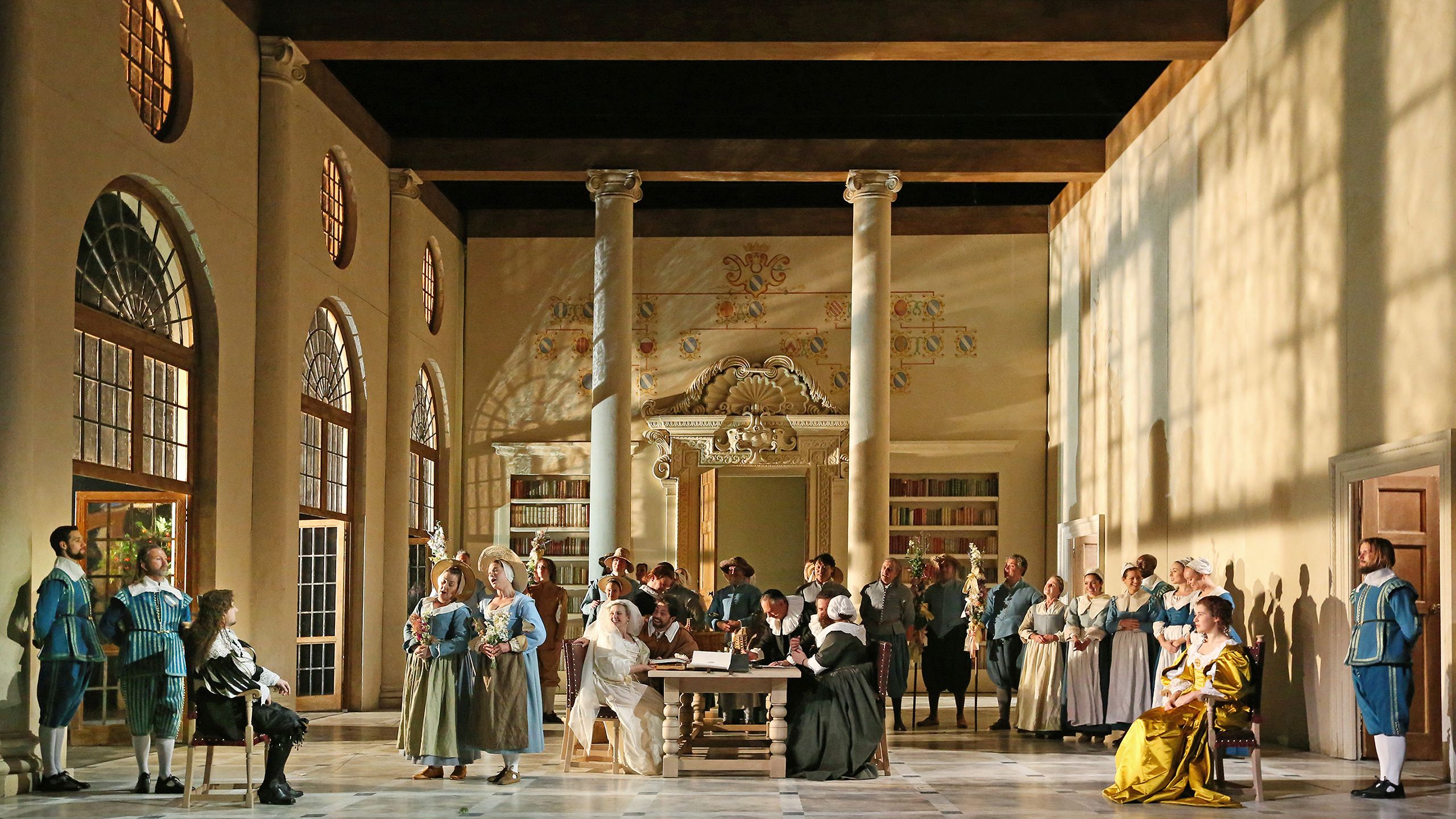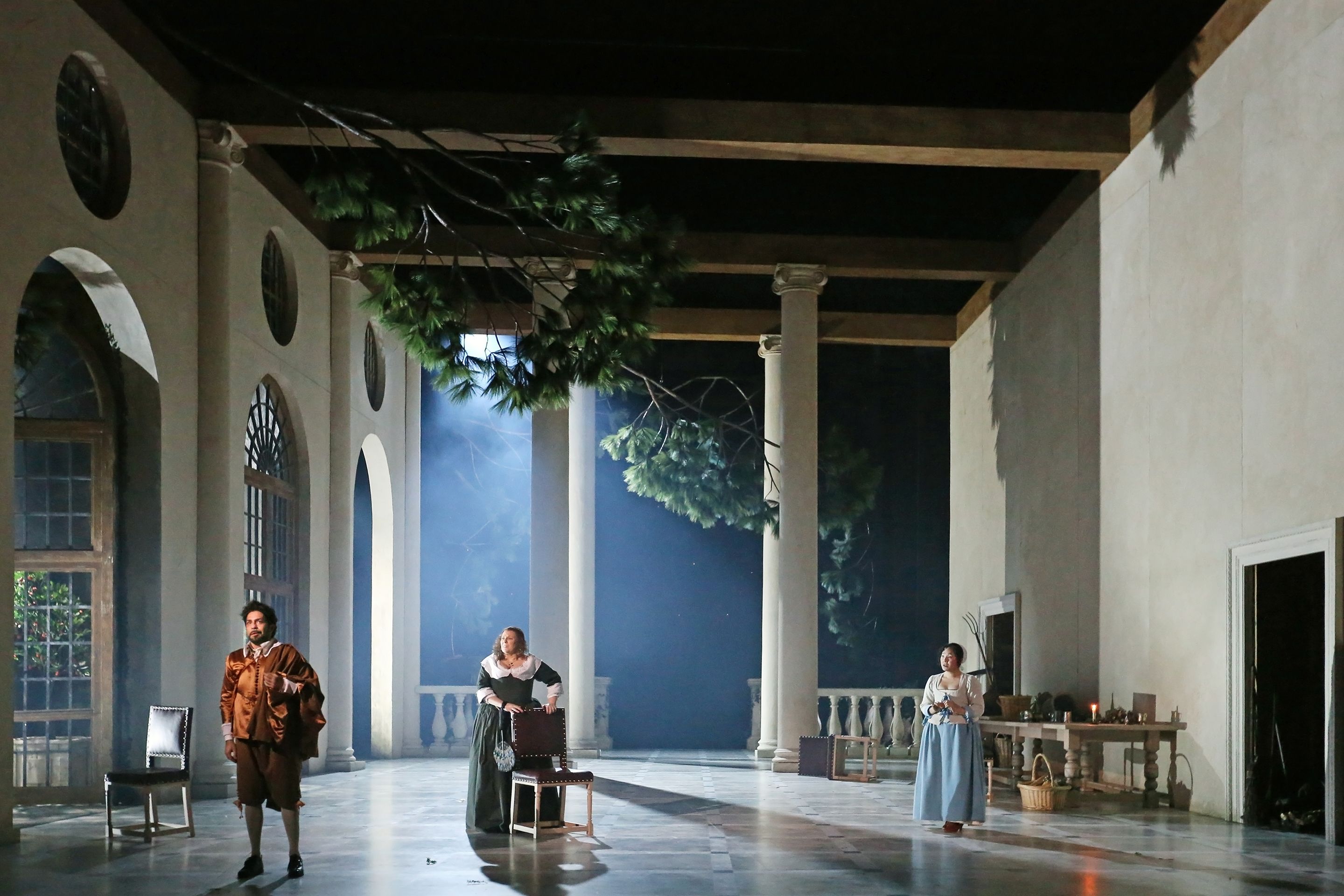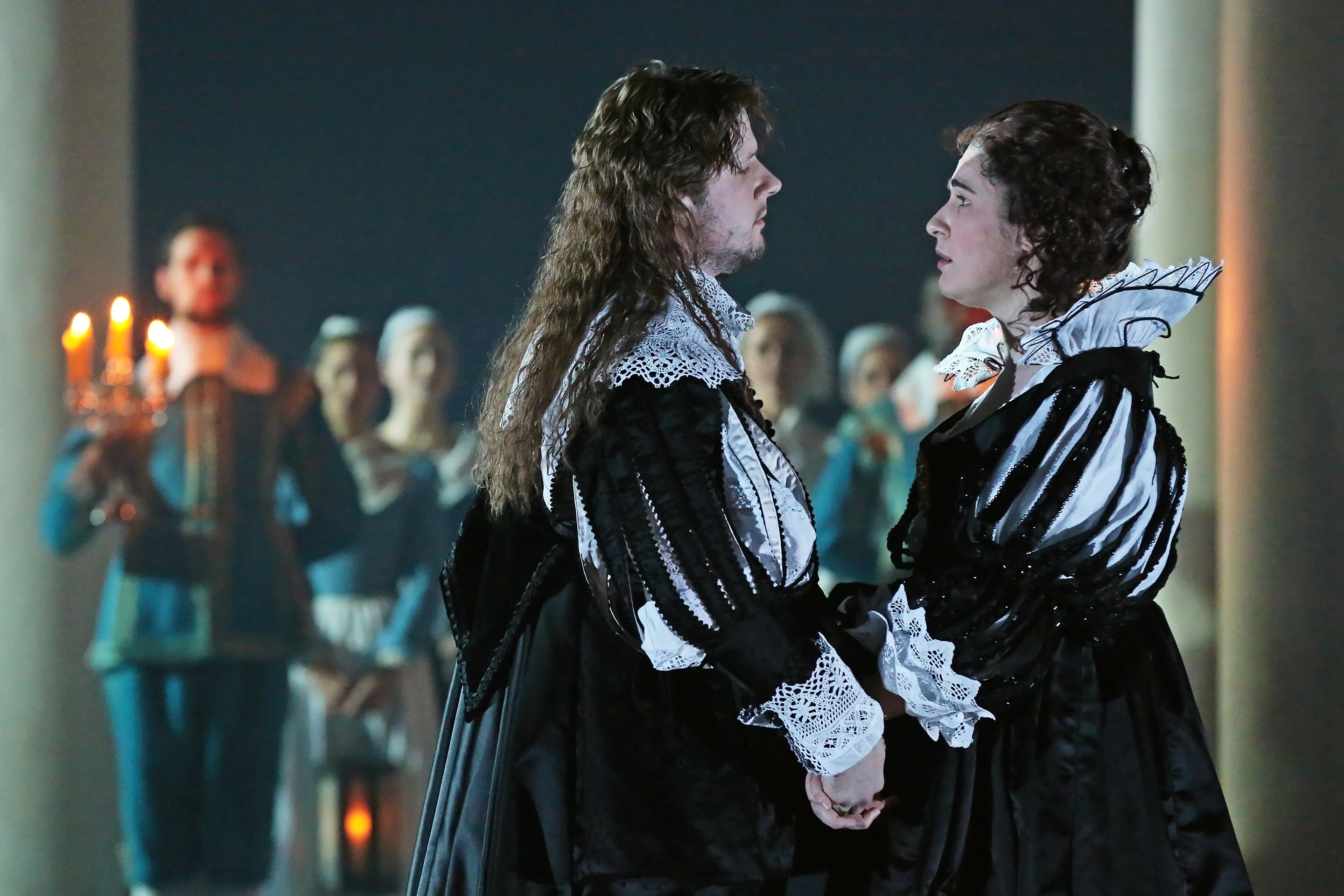Cheat Sheet:
The Marriage of Figaro
Get to know Mozart's classic comedy, including information about the composer, the story, the music, the history of the opera and some fun facts.

Who was the composer?

A posthumous portrait of Wolfgang Amadeus Mozart by artist Barbara Krafft, circa 1819. Source: Wikimedia Commons.
A posthumous portrait of Wolfgang Amadeus Mozart by artist Barbara Krafft, circa 1819. Source: Wikimedia Commons.
Wolfgang Amadeus Mozart.
How do you know you’re listening to Mozart? He wrote stunning melodies, often with lots and lots of notes.
When Mozart lived in Salzburg, the emperor is said to have remarked of his music: “Too beautiful for our ears, my dear Mozart, and vastly too many notes!” To which Mozart supposedly replied, “Just as many as are necessary, your majesty!”
Mozart sought out stories for the music he already wished to write, believing “in an opera the poetry must at all costs be the obedient daughter of the music”.
What happens in the story?
The Count has his eye on Susanna, his valet Figaro’s bride-to-be. She might just be a servant, but Susanna’s pretty savvy and determined he won’t have his way — especially on their wedding day!
Figaro is outraged, but he’s got bigger problems: he owes money to a spinster who will only let the debt go if he marries her.
The Countess is sick to death of her husband’s wandering eye, and enlists Susanna to help win him back.
They all need the help of Cherubino, the lovesick youth who loves not just the Countess, but anyone who looks his way.
But Susanna is smarter than all of them. After a crazy day of disguise and duplicity, will she get her happily ever after?
Who are the main characters?
Count Almaviva — Head of the household
The Countess — Almaviva’s wife (you might know her as Rosina, from The Barber of Seville)
Susanna — the Countess’ maid
Figaro — personal valet to the Count
Cherubino — The Count’s Page
What's the big hit?
‘Non più andrai’ — as the Count orders Cherubino off to war, Figaro jokes about the new life in store for him: one with no women!
That sounds familiar...
The Shawshank Redemption features a beautiful duet from The Marriage of Figaro (as the Countess and Susanna compose a letter), in a fantastic scene that revels in Mozart’s beautiful music.
Something to listen out for
The madness of The Marriage of Figaro takes place on a single summer’s day, and Mozart sets the pace in the overture: the strings scurrying all over the scale while the cellos and basses murmur away under it all.
This production is...
A naturalistic staging by director Sir David McVicar. It opens a “comic cauldron of sex and social politics” (Limelight), where the comedy has a dark, sharp edge.
Jenny Tiramani’s extraordinary 17th-century designs clothe the aristocracy in ravishing silks and the servants in cornflower blue. A historical fashion specialist, Tiramani’s costumes are stunning in detail and authentic in design. David Finn’s radiant lighting streams through vaulted windows to light enormous rooms in sunlight and moonbeams as day turns to night.

The Marriage of Figaro at Sydney Opera House (2015). Photo: Prudence Upton.
The Marriage of Figaro at Sydney Opera House (2015). Photo: Prudence Upton.
A little history
Mozart apparently sifted through 100 plays before settling on Beaumarchais’ revolutionary The Marriage of Figaro — a play so popular at its première that people were crushed to death in the crowd. It had both delighted and outraged the aristocracy, so both Mozart and librettist Da Ponte were very aware of censorship.
Determined to get Emperor Joseph II’s approval, Da Ponte’s libretto stripped the play of its overt political messaging, replacing Figaro’s rant about the upper class with an equally angry tirade against the fickleness of women. But Da Ponte and Mozart didn’t take all the bite out of Beaumarchais’ subversive work. The servants may not denounce aristocratic privilege, but notice that regardless of station, each character is equal in wit, passion and cunning.
With the emperor’s permission, Mozart began work on the opera. “As fast as I wrote the words, Mozart set them to music,” wrote Da Ponte in his memoirs. In just six weeks, Mozart wrote the opera other composers described as a miracle. “I find it absolutely incomprehensible how someone can create something so absolutely perfect,” exclaimed Brahms. Haydn wrote that he heard the opera in his dreams.
An enthusiastic Vienna crowd at its première in 1786 deemed the opera a success, but it took the first performance in Prague a few months later to catapult it to a sensation. A few music lovers paid for Mozart to visit the city and hear the production, and by the end of that trip, Mozart and Da Ponte had a new commission: Don Giovanni.
Conversation starters
- French women so enjoyed the clever female characters of Beaumarchais’ original play that fashionable French ladies had lines from the play inscribed on their fans.
- Mozart conducted the first two performances of the opera, seated at his fortepiano as was customary.
- The opera was such a success that the emperor requested a private performance. He also outlawed an excessive number of encores at performances of The Marriage of Figaro.

In a nutshell
The composer: 18th century musical genius Mozart. A prolific and enduring composer, who composed operas, symphonies, chamber pieces, choral masterpieces and much more.
The music: Intricate, energetic and endlessly tuneful. It features some of opera's most recognisable melodies, including in the spectacular overture.
The big hit: 'Non più andrai', Figaro's first act aria.
The setting: 17th century. A lavish country estate, just outside Seville.
The history: Mozart adapted a much-loved comedy into this opera, which itself was an immediate hit. The composer was already hugely popular at the time, but this opera marked the start of a really spectacular string of hits.
A quirky fact to impress your date: Mozart churned out The Marriage of Figaro in just six weeks.
